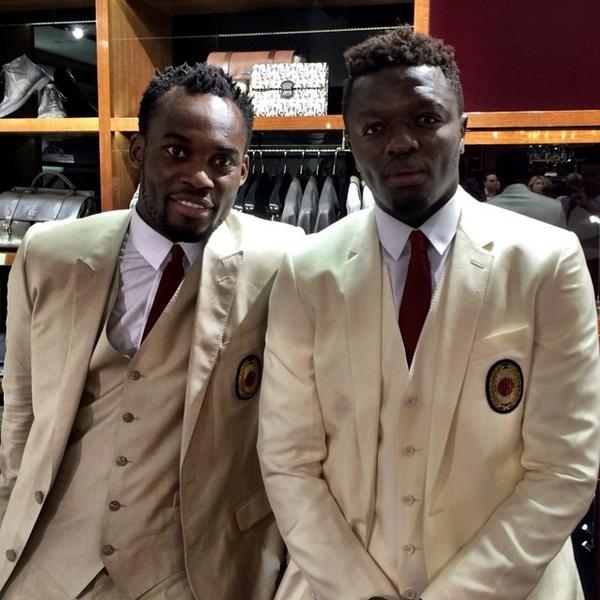AC Milan should have regrets for the past 12 months. They failed to make the Champions League for the first time in a decade. They dropped down to the bottom half of the Serie A table. And they lost every bit of class along the way.
What’s left is a squad playing in an empty stadium with an inexperienced coach, an oft-injured captain and a leaky defence. The Rossoneri cannot even win two games in a row. It’s sad times indeed.
The club made some poor choices to get to this point.
Milan have not allowed their youngsters the time to properly develop, and instead have played washed-out scrubs, who have perpetuated the current cycle of mediocrity. They forced one club legend to retire and then fired him as coach. Then they hired another, only to threaten the manager with the axe yet again, according to Sportmediaset (h/t Forza Italian Football).
Let’s take a look at Milan’s worst decisions in this span of time.
Playing Sulley Muntari and Michael Essien
It’s not a coincidence that whenever Michael Essien and Sulley Muntari play together, the team does not play well.
They have not touched the pitch since their disastrous performances in a 3-1 loss to Juventus early in February. However, injuries to Riccardo Montolivo and Nigel de Jong could open the door for the Ghanaian duo.
The problem with them is that they are slow—slow even by Serie A standards. Plus, they habitually turn over the ball. Despite those factors, they were given playing time ahead of some promising prospects.
Furthermore, Muntari was handed the captain’s armband for the Juventus match. There is not a player less deserving of the armband than Muntari. The captaincy lost any shred of honour it had left then and there.
Keeping M'Baye Niang on the Bench
Milan moved 20-year-old M’Baye Niang to Genoa on loan.
The resulting irony is palpable. Niang could not get any substantial minutes at Milan, so he ventured to a club ahead of the Rossoneri in the standings and immediately started games and scored goals. It’s proof that Milan’s so-called "youth movement" does not exist.
Niang has been one of Genoa’s standout players since joining the team. He has an air of calmness when playing—not aloofness, but a sense of lulling opponents into a sense of false security. He can also provide the assists, and his runs are penetrating.
Niang is a dynamic player, exactly what Milan are missing. He has already told Genoa newspaper Il Secolo XIX (h/t Football Italia) that he wants to keep playing there.
Firing Clarence Seedorf
Clarence Seedorf played with a strong personality, and he coached the same way. He was fired not six months into his first stint on the bench.
Seedorf retired from the game to rejoin Milan in this new capacity. He did not have the benefit of a pre-season or a full transfer window. He largely inherited a troubled squad.
Some of the players, according to Goal.com's Stefan Coerts and Mark Doyle, did not like him. Therefore, it was easier to sack the coach.
Seedorf nonetheless achieved good results. He had more points after 19 games than his predecessor, Massimiliano Allegri, or his successor, Filippo Inzaghi.
The Dutchman brought back a sense of accountability to Milan, highlighted by his benching of captain Montolivo. Seedorf may not have been the answer, but he was certainly ready to fight the disease of mediocrity at Milan.
And it cost him his job.
Hiring Filippo Inzaghi
Milan decided to replace one inexperienced manager with another. They promoted Filippo Inzaghi from the youth team, and at first he seemed to re-energize the club. Players ran over to him, hugged him, celebrated goals with him. But that togetherness slowly disappeared.
Inzaghi’s starting XI has changed on a weekly basis. Milan have not played with the same centre-back pairing for more than a couple of weeks—if that long. Injuries have played a part, but Inzaghi has ultimately been the biggest hindrance to any form of consistency.
For someone who spent his formative coaching years at the youth level, Inzaghi has not been too kind to the young players. Riccardo Saponara and Niang were forced to leave, and now Suso and Marco van Ginkel are struggling for time. Inzaghi is demonstrating poor management skills.

